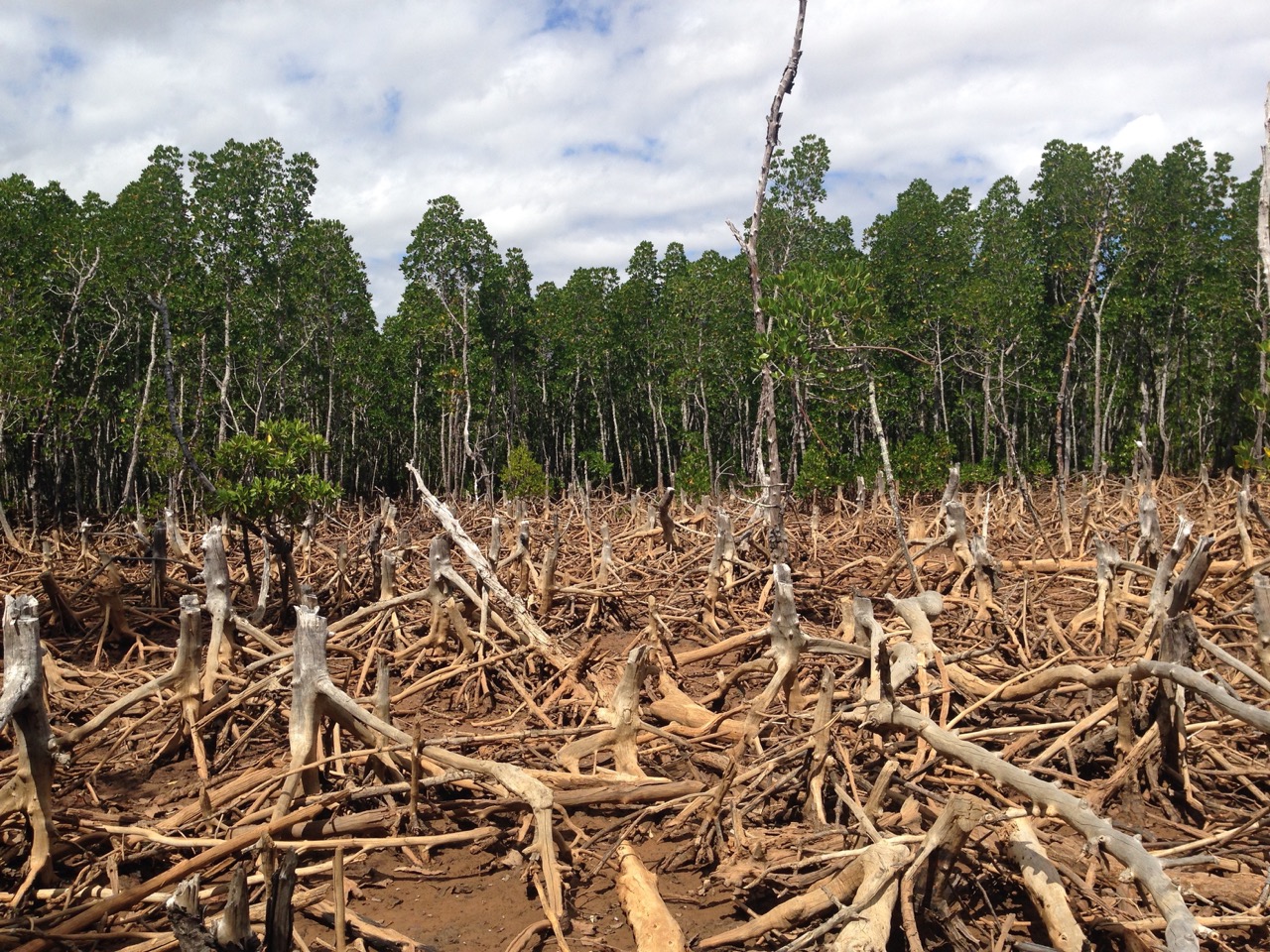
Tropical forests are incredible melting pots of biodiversity and are essential for regulating global climate through, among other things, carbon storage. Without these forests, the effects of climate change would be stronger and faster. Yet tropical forests are threatened all over the world. The causes and effects of deforestation are extremely diverse and varied in different parts of the world, as are the forests themselves. Indeed, tropical forests can be humid or dry, on land or in swampy areas, at low or high altitudes, and each forest has a wide variety of disturbances and resilience capacities.
Currently, the media are talking a lot about deforestation in tropical rainforests such as the Amazon or the Congo Basin, which are indeed very threatened, but there is less talk of more discreet forests such as dry forests, perhaps, as Janzen (1988) said, because human disturbances are less visible, but perhaps also because these forests are made of needles and thorns, trees, and leafless plants, so many improbable and spectacular adaptations to drought are far less studied than their wet counterparts.
This is currently the case for Madagascar’s dry forests in the southwest part of the country, which are particularly rich in endemic species and families of plants (such as Didieraceae) and animals threatened by deforestation (inbound and outbound crops, mining, charcoal, traditional slash-and-burn agriculture). There is little information or knowledge about these forests’ disappearance, and few researchers have been interested in them. This is what a team of researchers from ESSA-forêts department of the Antananarivo University and IRD wanted to do in order to understand the effects of human practices such as traditional cultivation on these dry forests’ regeneration dynamics.
These researchers found that these neglected ecosystems, which are essential for biodiversity, must be studied both in their structure and specific composition as well as in their dynamics in order to describe them, better anticipate future changes, and produce recommendations for their conservation. These elements are important to better understand the effects of these practices on the ecosystems themselves, but also because they provide crucial ecosystem services for local human populations. These researchers wish to better understand them in order to better manage them for the benefit of all, without making these populations feel guilty.
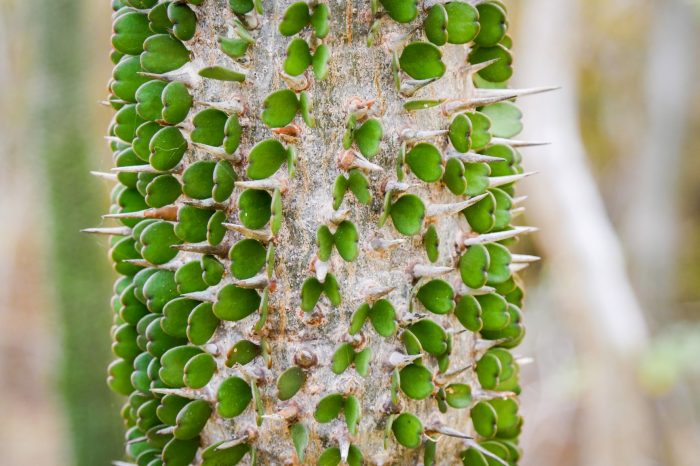
Image courtesy Stephanie M. Carriere.
To better understand the effects of subsistence slash-and-burn agriculture practiced in these regions by the Tanalana and Masikoro populations, researchers focused on a type of dry forest, the xerophytic thicket (XT), currently under serious threat on the Belomotse plateau (see Randriamalala et al. 2019).
For this vegetation study, sixty 10 m X 10 m plots were sampled according to the age of abandonment after cultivation and compared to other plots of mature natural forests over 40 years old that have never been cultivated or exploited for charcoal production, according to human memory. These plots were located on the two dominant soil types in the region: calcisols and lixisols.
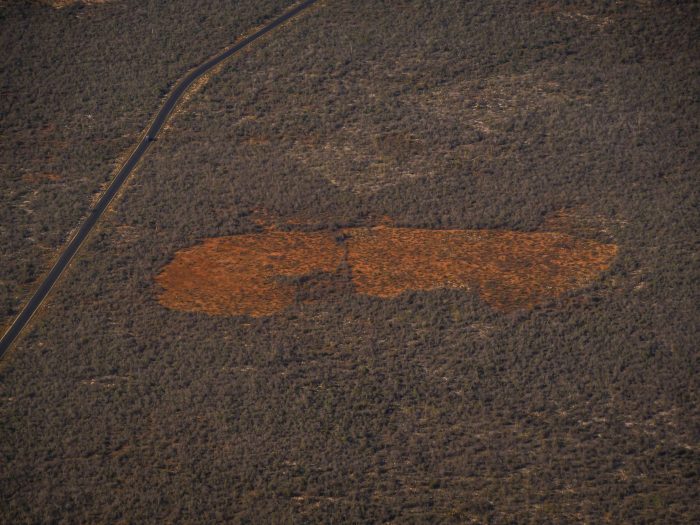
View of the study area courtesy Stephanie M. Carriere.
Interviews with local guides provided an estimation of the age of abandonment and, as accurately as possible, a description of practices (slashing, crop succession, and tillage regime) was made for each surveyed plot. A census of all shrubs and lianas and herbs along lines was carried out. Diversity and structure indicators were calculated for each plot: species richness, which is the total number of species in each plot; evenness of shrubby species abundance; liana species richness; shrub density; mean total height; and mean DBH. All of these diversity and structure indicators were calculated for both understory and overstory vegetation, except the liana species richness, which was associated with understory vegetation, the mean DBH and the mean height, which was only calculated for overstory vegetation.
Slash-and-burn cultivation practiced in the study site consists of slashing all trees and shrubs in the plot during the dry season in November-December, before the first rain, and letting them dry out for 2-10 days before burning them. The clearing concerns all the woody individuals in the plot, but cut stumps are not removed and some of them may sprout later. Maize, peas, and Cucurbitaceae crops are sown together after the first clearing, and again during the first two to three cropping periods. Plots on calcisol cannot be easily plowed and are abandoned after 2-3 years cropping, while plots under lixisol may be exploited more continuously with cassava and/or sweet potato, and sometimes with groundnuts after manual soil plowing. Plots on lixisol are temporarily abandoned when invasion by herbaceous weeds occurs and/or when crop yields decline. After 2-5 year periods of abandonment, the lixisol plots are burned and cassava and sweet potato crops are grown during 2-3 years. Repeated burning and soil plowing on lixisol ends up destroying all the remaining shrub sprouts and makes post-cultivation regeneration more difficult.
Species composition of overstory vegetation regrowth of XT in any soil type and those of understory vegetation in lixisol did not vary with age of abandonment. Soil type is the main factor conditioning XT species’ composition. There is a distinction between two plant species communities: (i) those on calcisol and (ii) those on lixisol. Differences in the water conservation of the two soil types may explain this phenomenon: shallow calcisols are associated with weak water retention, while deeper lixisols allow better water conservation in their deeper layers and maintain humidity for a longer period.
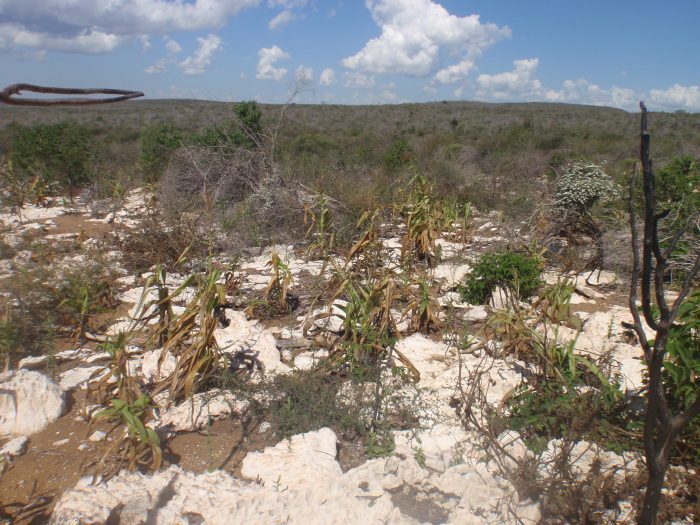
Cultivation on calcisols. Image by J. R. Randriamalala.
This difference in water availability may have shaped the adaptations of different plant communities on these two types of soil: the plant community on calcisol is more resistant to drought than that on lixisol, where water availability is higher. The extreme aridity of the study site climate (annual rainfall<400 m) may explain the absence of variations of species composition of overstory vegetation with age of abandonment. Tree and shrub species in semi-arid areas grow slowly and seed germination under conditions of absence or scarcity of water into the soil sub-surface is difficult.
Species composition of understory vegetation regrowth of XT on calcisol varied with the age of abandonment. Germinating seeds from soil seed banks or from seed dispersal from species located in surrounding undisturbed XT on calcisol, helped by the relatively rapid development of overstory vegetation which provided shade, may explain these patterns of change in understory vegetation regrowth species composition on calcisol. In fact, the weak agricultural disturbance of XT on calcisol (short crop duration and no use of soil plowing) favored tree and shrub sprouting, which may rapidly increase the ligneous plant cover.
These tree and shrub sprouts can play a nurse plant role and favor seed germination and survival of seedlings from this germination. In fact, it was demonstrated that survival rates of seedlings in semi-arid areas are higher under the shade of thickets than those of seedlings in open space. However, a secondary succession of XT on lixisol seems to be prevented for a longer period of time. Heavier agricultural disturbance of plots on lixisol (longer crop duration and soil plowing for tuber crop) may explain this slowness or lack of regeneration.
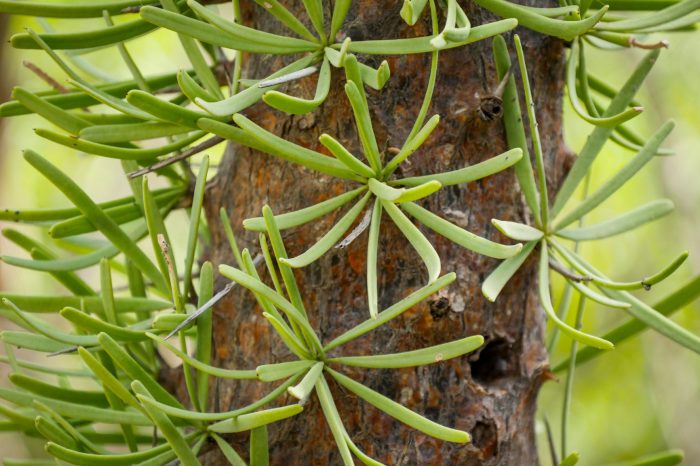
Image courtesy Stephanie M. Carriere.
Finally, XT structure parameters (height and basal area) increased with age of abandonment, while diversity (species richness and evenness index) did not. Secondary succession in XT vegetation was assimilated to the growth of structural parameters.
After slash-and-burn cultivation, the resilience of XT is low; this ecosystem regenerates slowly after clearing and cultivation. Slash-and-burn cultivation, timber and firewood extraction for commercial purposes, and woody charcoal production are the main human pressures on this XT vegetation. Such pressure may come from the presence of poor local communities living in and around these XTs. The sustainable management of these XTs will necessarily require the alleviation of these pressures by reducing the natural resource dependence of local communities through alternative income generating activities such as goat breeding. Goat breeding is, in fact, the main source of income for households in these areas because goats are better adapted to conditions of drought than agricultural activities.
Thus, livestock sales almost entirely finance household expenditure (food and others) when agricultural production is lacking in cases of drier periods. An improvement in goat breeding methods could significantly increase the income of goat herders. The income will come from the regular sale of the surplus animals produced: the oldest females and the adult males could be sold because the herd recruitment is ensured by the birth of new kids. Furthermore, such breeding techniques would avoid overgrazing, which is the main source of the detrimental impact of small ruminants on vegetation in semi-arid regions. Goat grazing on XT, with a stocking rate of one head/ha, does not leave a significant footprint on the regeneration and diversity of this vegetation (Randriamalala et al., 2016). Under these conditions, goat breeding may be a sustainable way to exploit XT vegetation, and an efficient means to alleviate poverty and malnutrition at the XT vegetation area.
XT recovery is slow and limited to the increase in structural parameters. No changes in species composition along the age of abandonment occurred, except in understory vegetation of XT on calcisol. The soil was the main driver of XT floristic composition. Secondary succession in XT vegetation was assimilated to the growth of structural parameters. The promotion of traditional activities such as goat breeding may be one of the relevant ways to reduce the pressure on XT.
These findings are described in the article entitled Slow recovery of endangered xerophytic thickets vegetation after slash-and-burn cultivation in Madagascar, recently published in the journal Biological Conservation.
References:
- Randriamalala R.J., Radosy H.O., Razanaka S., Randriambanona H. & Hervé D., 2016.- Effects of goats grazing and woody charcoal production on xerophytic thickets of southwestern Madagascar. Journal of Arid Environment. 128 : 65-72.
- Randriamalala R.J., Randriarimalala J., Hervé D. & Carrière S.M., 2019. Slow recovery of endangered xerophytic thickets vegetation after slash-and-burn agriculture in Madagascar. Biological Conservation. 233 : 260-267.









